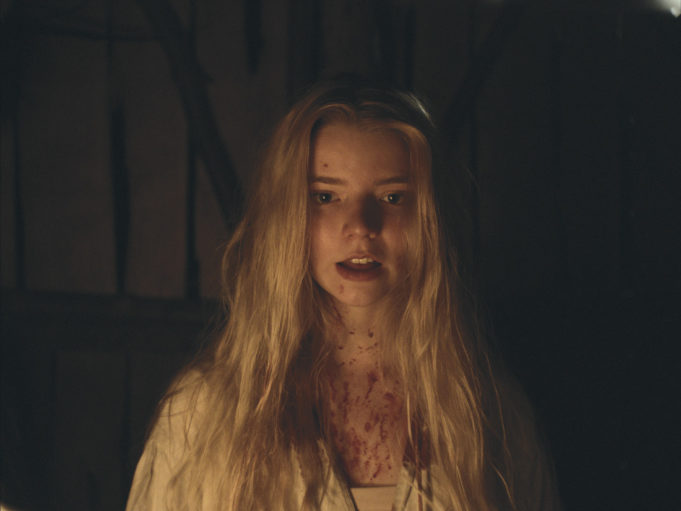Ladies and gentlemen, I’ve just run across the first genuinely Satanic movie of my life. Lots of horror flicks traffic in mere demonic trappings and symbols and Latin phrases. The Witch, however, truly feels like it was touched by a diabolical hand. To which I say, “Why not?” Christians have so many movies to call their own, it’s only fair that the Devil worshippers get one, especially if it’s as authentically scary as this. I’m sure the Satanists wouldn’t have it any other way.
Set in 1631, the film is subtitled “A New-England Folktale,” and indeed a title card at the end reveals that many of the incidents and much of the dialogue are taken from stories told during the Colonial era. It starts with Thomasin (Anya Taylor-Joy), a teenager and the eldest of five siblings, watching her father (Ralph Ineson) get banished from civilization for preaching heterodox Christianity. At the family’s new home at the edge of a dark forest, Thomasin is playing peek-a-boo with her baby brother one day when the infant mysteriously disappears in the few seconds it takes her to uncover her eyes.
Despite the talk of witches, the family is fracturing under pressures we can easily recognize. Mother (Kate Dickie) is unhinged by grief and hates it in the New World, while Father repeatedly lies to her to cover up his failures to provide for his children. These added to the insularity of an isolated family, a religion liberally mixed with the era’s superstitions, and the corrosive, all-encompassing fear of things both imagined and real — like the crop failure that leaves the family in danger of starving to death — turn into a recipe for bloodshed. When Thomasin tries to bully her annoying little sister (Ellie Grainger) by claiming to be a witch, you know it’s going to recoil on her tenfold. Sure enough, the word gets to her parents after more misfortunes have hit, and when they threaten to throw Thomasin down the well, the girl does something awful in her panic. These people’s human motivations and shortcomings are far more real to us, and thus more terrifying, than any child-snatching old crone in the woods.
This is the first feature by Robert Eggers, a former production designer who mostly refuses to resort to horror directors’ usual tricks. Instead, he conjures unsettling details both big and small, like the squirt of blood when Thomasin tries to milk the family’s nanny goat and the family dog who chases a rabbit into the forest and later turns up disemboweled. The early going is filled with shots of the woods that are laced with dread, but Eggers eventually shows us the evil spirits lurking there, as well as a superbly chilling moment late when Thomasin conjures Satan to speak to her and gets a response.
Composer Mark Korven generates much of the scares all by himself, scoring the movie innovatively with wailing choruses, a waterphone, and antique instruments like a jouhikko and a Swedish nyckelharpa. Cinematographer Jarin Blaschke photographs much of this in washed-out colors that mimic a black-and-white movie, only to burst into brilliant sunshine and golden candlelight. The unreliable light also adds to the fear, as when the remaining children get locked in the barn by Father one night and see something in the moonlight that’s in there with them.
Putting kids in jeopardy is a disreputable old trick for filmmakers to pull, but the young cast does terrific work, and Eggers lets us know what’s in store for them by giving us a glimpse of that baby’s ultimate fate. (It’s beyond gruesome.) There’s a hair-raising sequence filmed in one take when Thomasin’s deathly ill younger brother (Harvey Scrimshaw) rises from his sickbed with an ecstatic smile to give one last benediction: “I long to kiss Thy lips! Wash me in the fountains of Thy blood, O Lord!” Anchoring it is Taylor-Joy, an English newcomer who’s dewily beautiful like Elle Fanning, who conveys all the confusion and fear that this young girl feels as she helplessly watches her younger siblings die and then gets blamed for it.
You can read the Goya-inspired final tableau literally or as some sort of dream that allows Thomasin to take back the power that has been denied her. Either way, The Witch has the primal power of a story told around a campfire to disturb the sleep of everyone who hears the tale. I saw this film twice before I wrote this review, and the second time I walked out with even deeper chills.
[box_info]The Witch
Starring Anya Taylor-Joy. Written and directed by Robert Eggers. Rated R.[/box_info]












